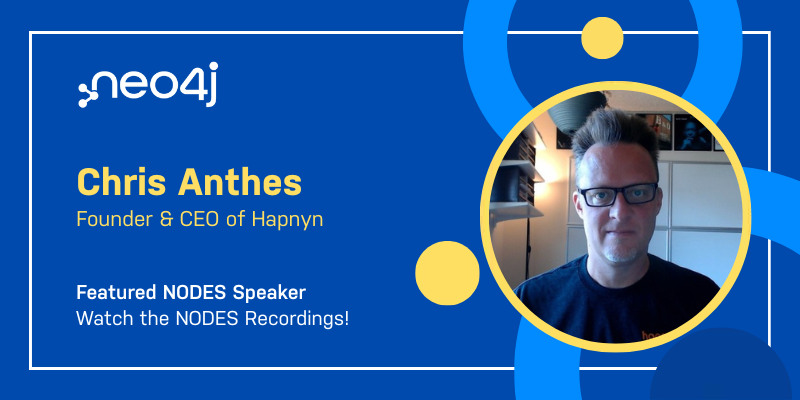This Week in Neo4j: OpenAI, Deploying on GCP, Neodash, Graph Algorithms, Python, and More

Sr. Manager, Developer Community
3 min read

Thanks for tuning in to this week’s newsletter! Check out Gaston Guitart’s article for developers provisioning instances on GCP. This automated deployment system for Neo4j extensions is a workflow consisting of a GCP function and a NodesJS web app.
You may also be interested in Eranga Dulshan’s integration of OpenAI semantic search embeddings into a graph database for use with graph data science. Python developers can take a look at the NODES 2022 videos highlighted in Jason Koo’s article “Nodes 2022 for Pythonistas.”
Cheers,
Yolande Poirier
P.S.: If you’re a developer building modern applications with GraphQL, don’t forget to take this short, two-minute survey. We want to hear from you!
FEATURED NODES SPEAKER: Chris Anthes
In his NODES 2022 presentation, he covers the process of building a consumer-facing application utilizing GRANDstack, including a comparison of using property graphs vs traditional SQL or document-based databases to model data, handle business logic, and solve unique problems that traditional databases struggle with. Watch it now!

ML: Using OpenAI Semantic Search With Neo4j
In this blog, Eranga Dulshan uses OpenAI semantic search and py2neo package on a graph database of PDF files. He saves the OpenAI generated embedding vectors in Neo4j nodes and calculates the cosine similarity at the database level with graph data science.
VISUALIZATION: Exploring Neodash for 197M Chemical Full-Text Graph
Tom Nijhof, biomedical engineer, explores a chemical graph database with NeoDash. With an input field and a result field, the addition of a full query yields a fuzzy full-text search.
NODES SESSION: Graph Algorithms and Visualization for Clinical Care Support of Pneumonia
PYTHON: NODES 2022 for Pythonistas
With over 40 hours of recorded NODES 2022 videos, it’s nice to have a guide. Jason Koo, Developer Advocate at Neo4j, sifts through it all from the viewpoint of a Python developer.
GOOGLE CLOUD: Automating Deployment of Neo4j Java Extensions
INTRODUCTION: Knowledge Graphs
TWEET OF THE WEEK: @saezlab
Don’t forget to retweet, if you like it!
We connect to the high-performance graph database system @neo4j (https://t.co/tjXOjXqcHn) as a user-friendly way to store and query the knowledge graph. This combination allows building enormous knowledge graphs in a very short time. 🚀
— Saez-Rodriguez Group (@saezlab) January 12, 2023
COMING UP NEXT
-
- Discover AuraDB with Michael and Alexander on January 23, 2023.
- Neo4j Live: Porting Global-Chem Graph Infrastructure into Neo4j on January 24, 2023.
- Full Stack GraphQL Book Club, Chapter 8: Deploying Our Full Stack GraphQL Application
on January 25, 2023.
… OF SPECIAL INTEREST
-
- Gephi 0.10 is out!Gephi is open-source software for network visualization and analysis. Learn about it.
- Quarkus Neo4j, a Quarkus extension to connect to the Neo4j graph database. It enables the use of the Neo4j Java Driver in both JVM mode and native executables. It provides configuration properties to configure all relevant aspects of the driver. Check it out.
- Built-in JDBC connector alpha. Major rework of the JDBC connectivity layer of the Neo4j extension for Liquibase is currently available for testing.
- Graph Data Structure with Java. Rafael del Nero explains how to create basic graph data structures in Java. Discover his tutorials.
- Depth-First Search with Java. In this post, Rafael del Nero explains depth-first search traversal algorithms such as preorder, postorder, and in-order.








